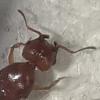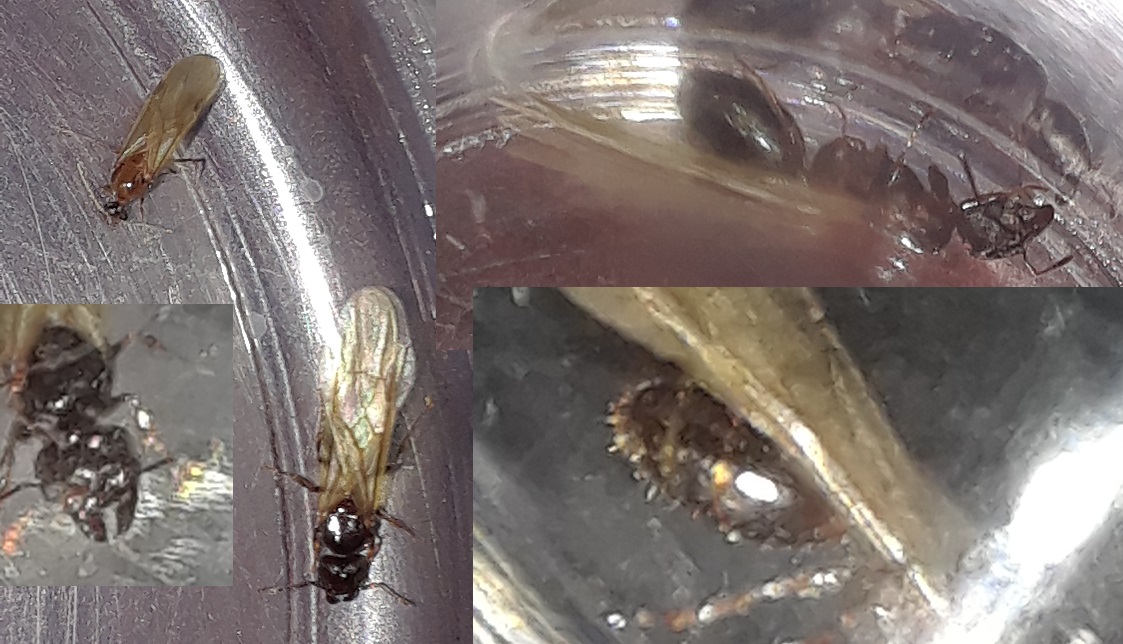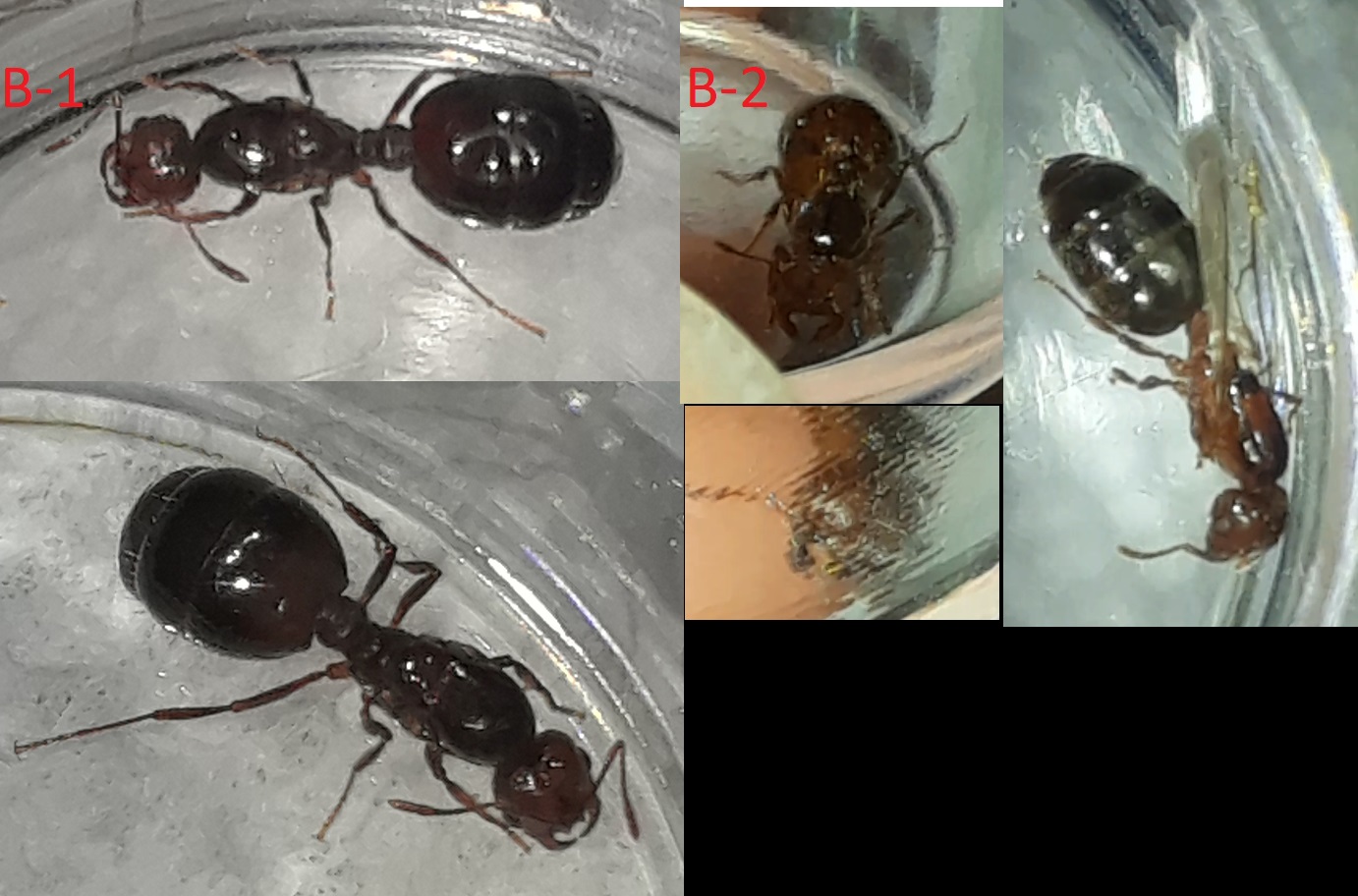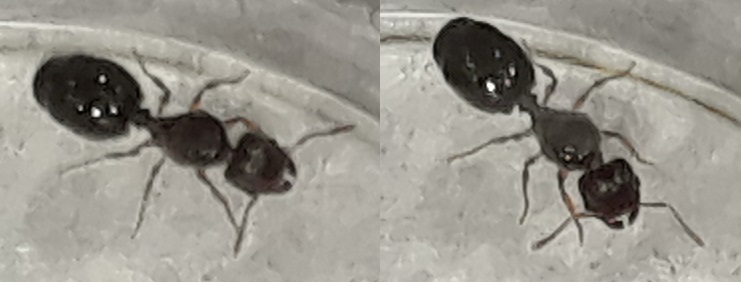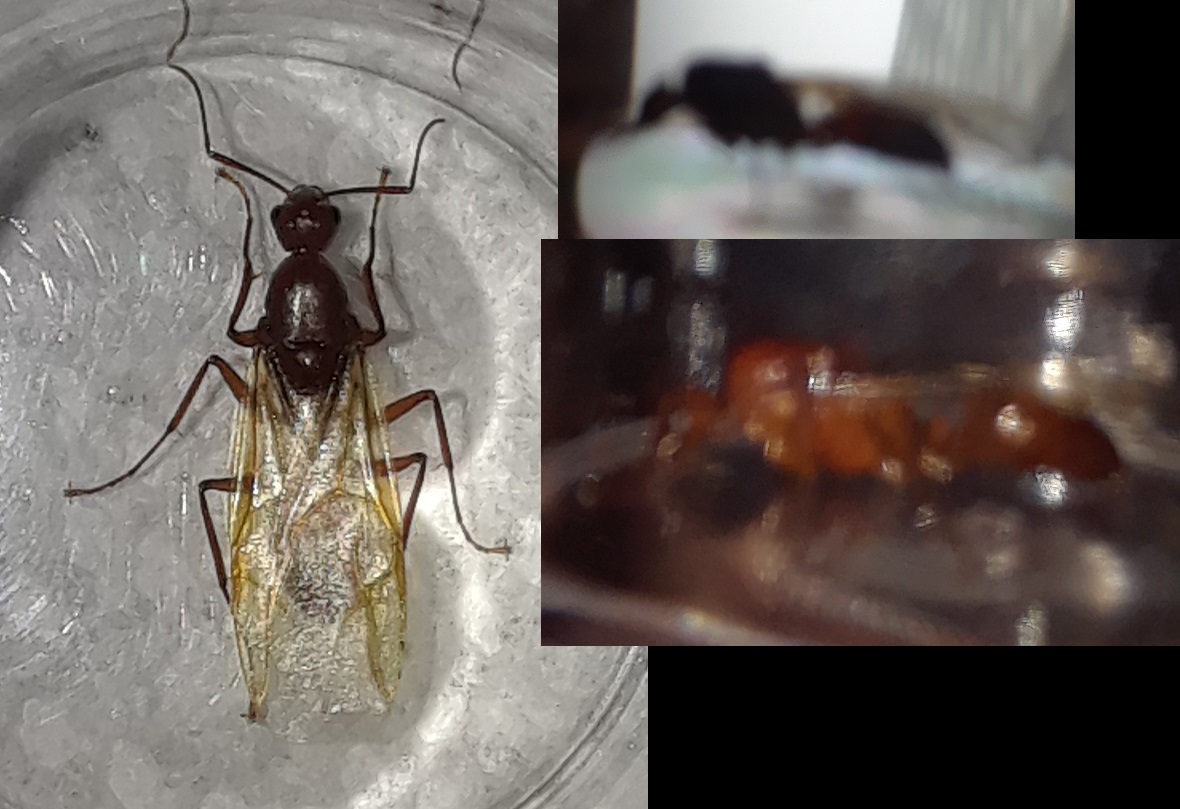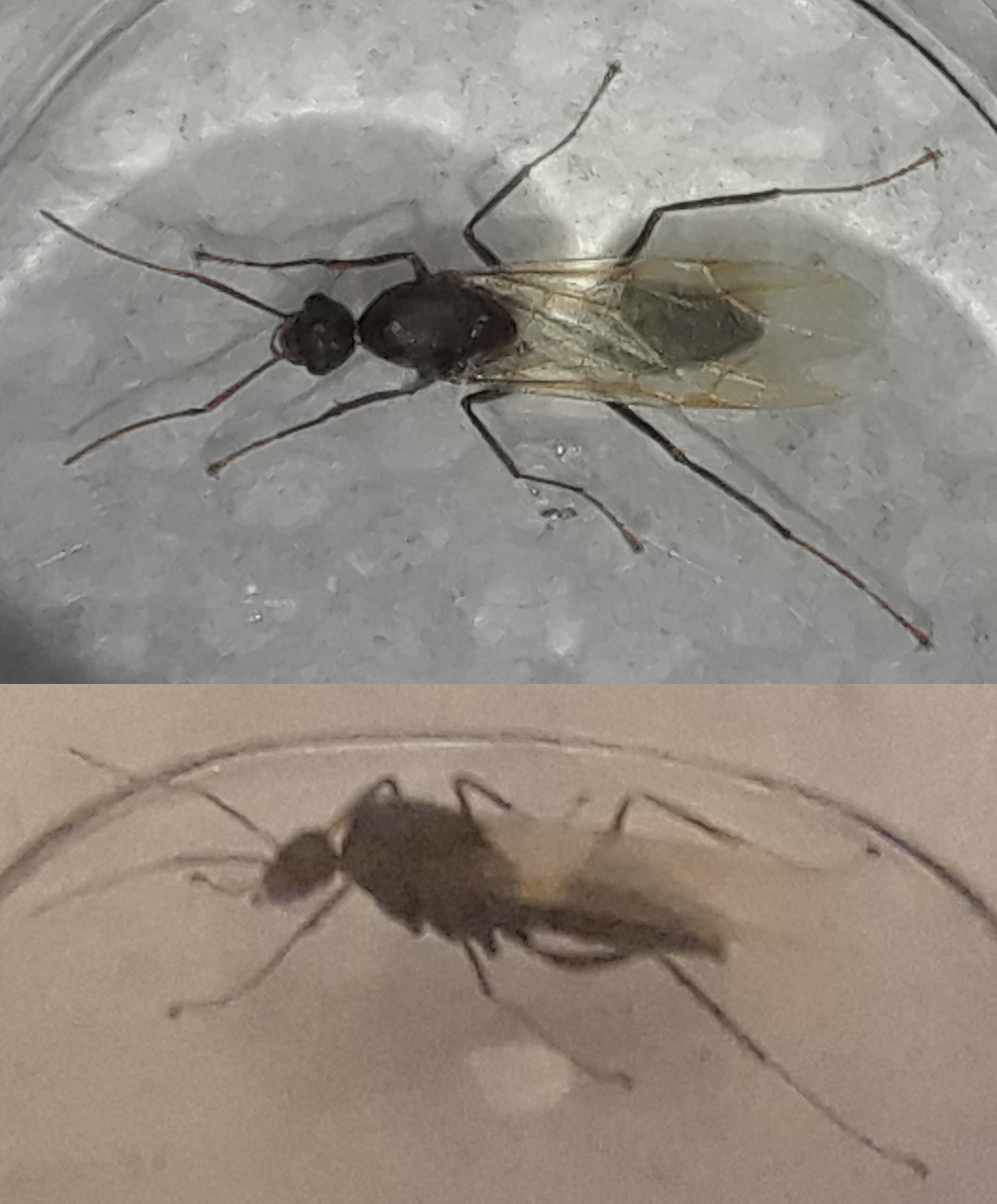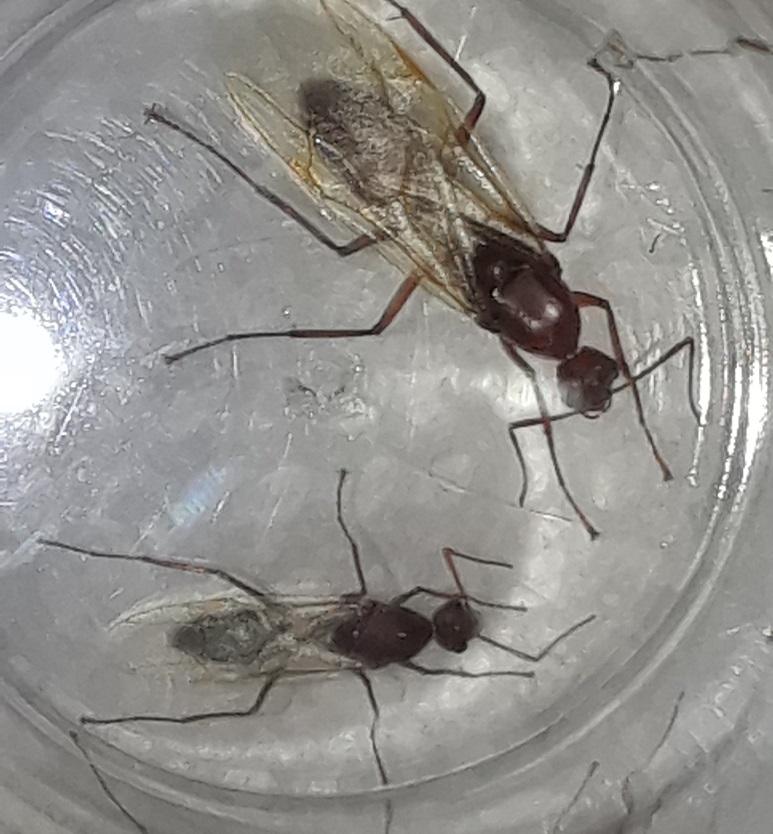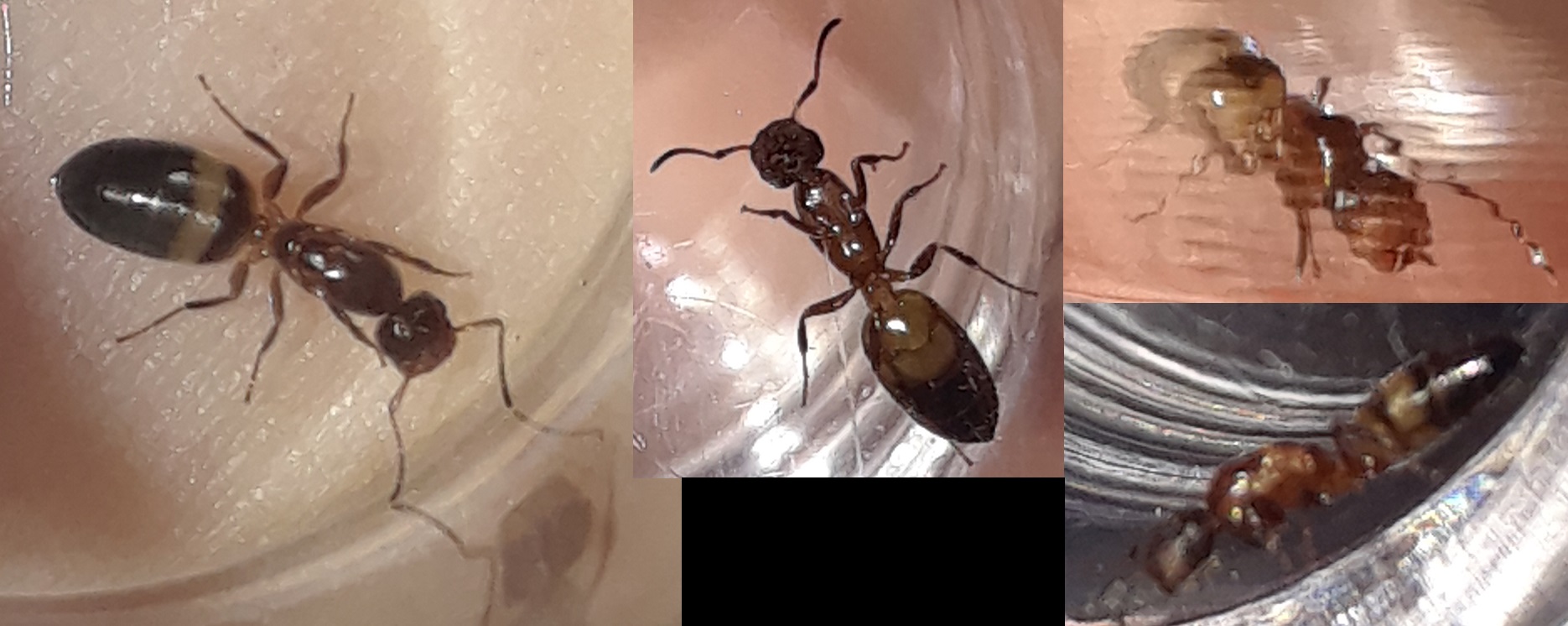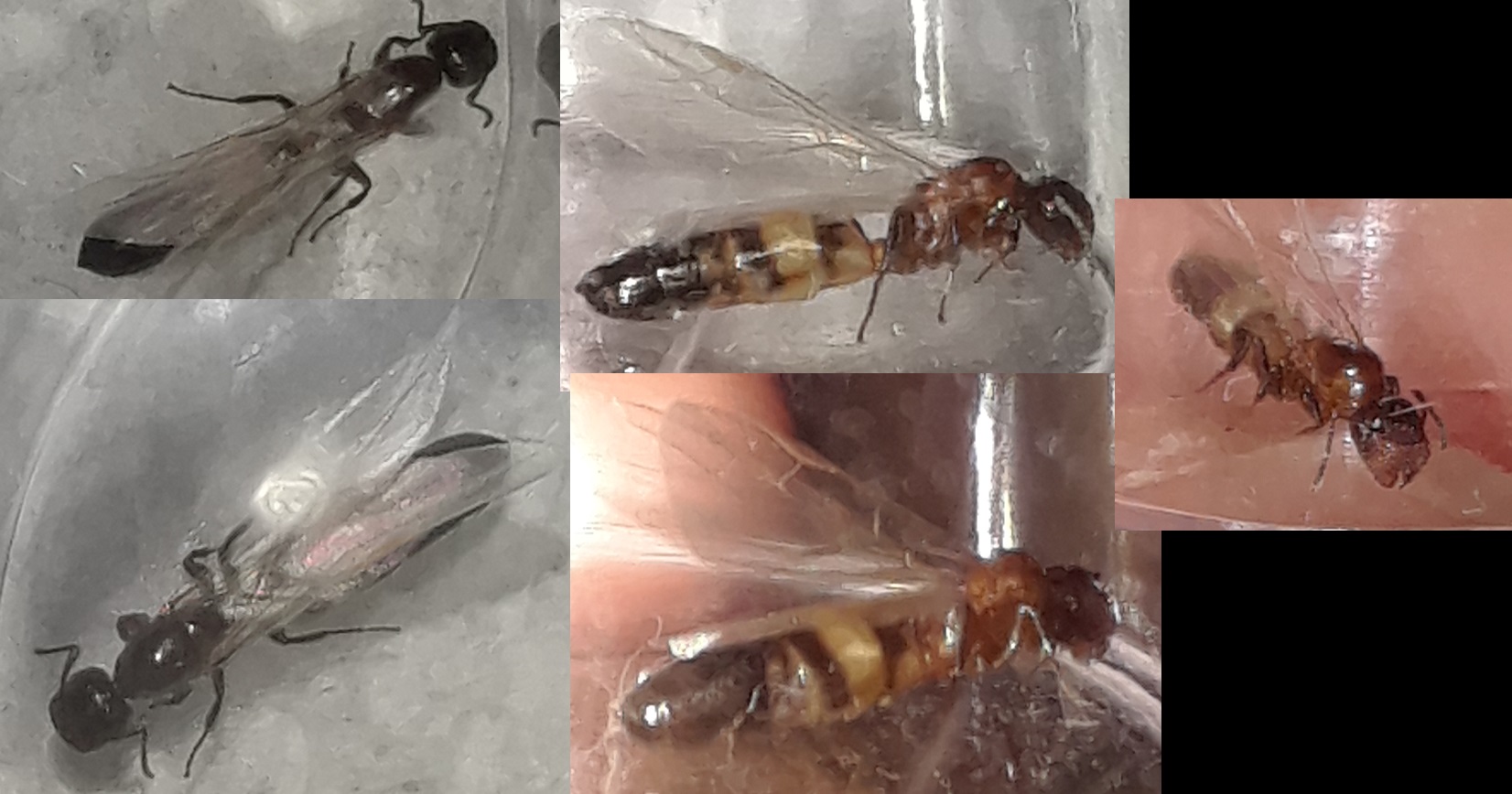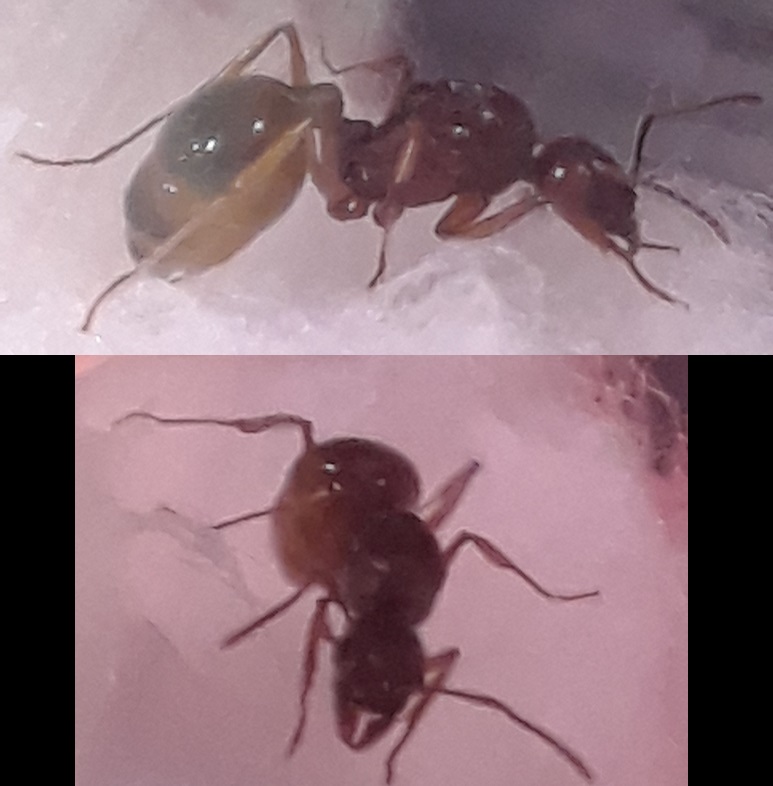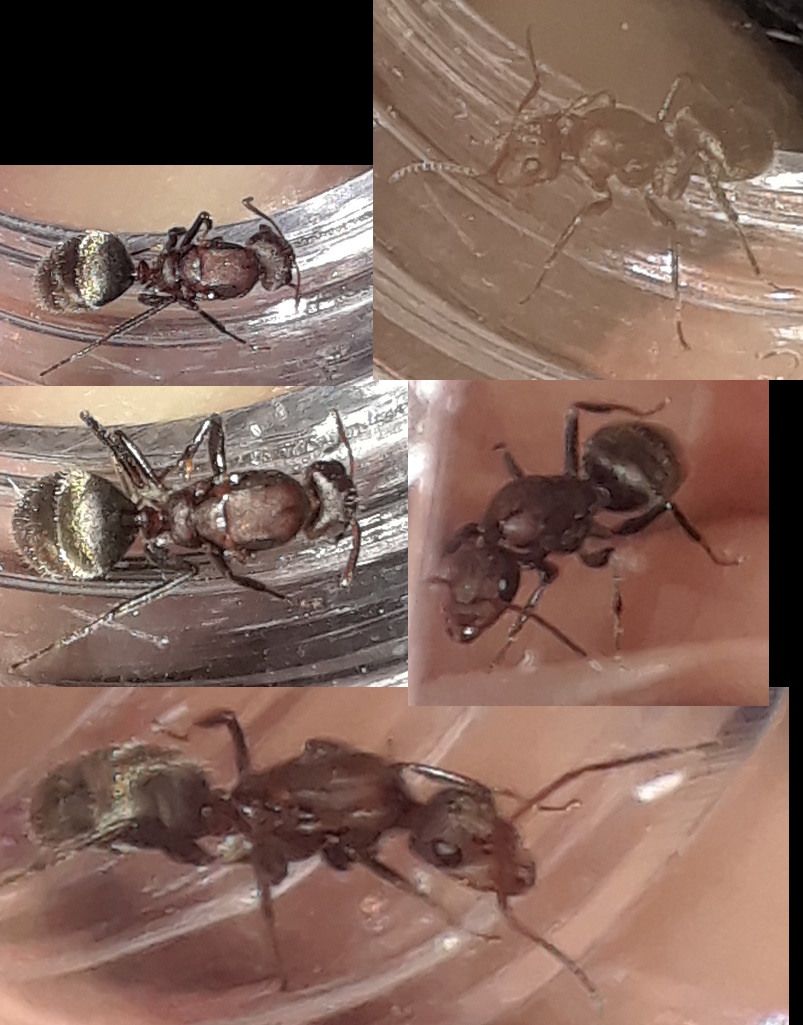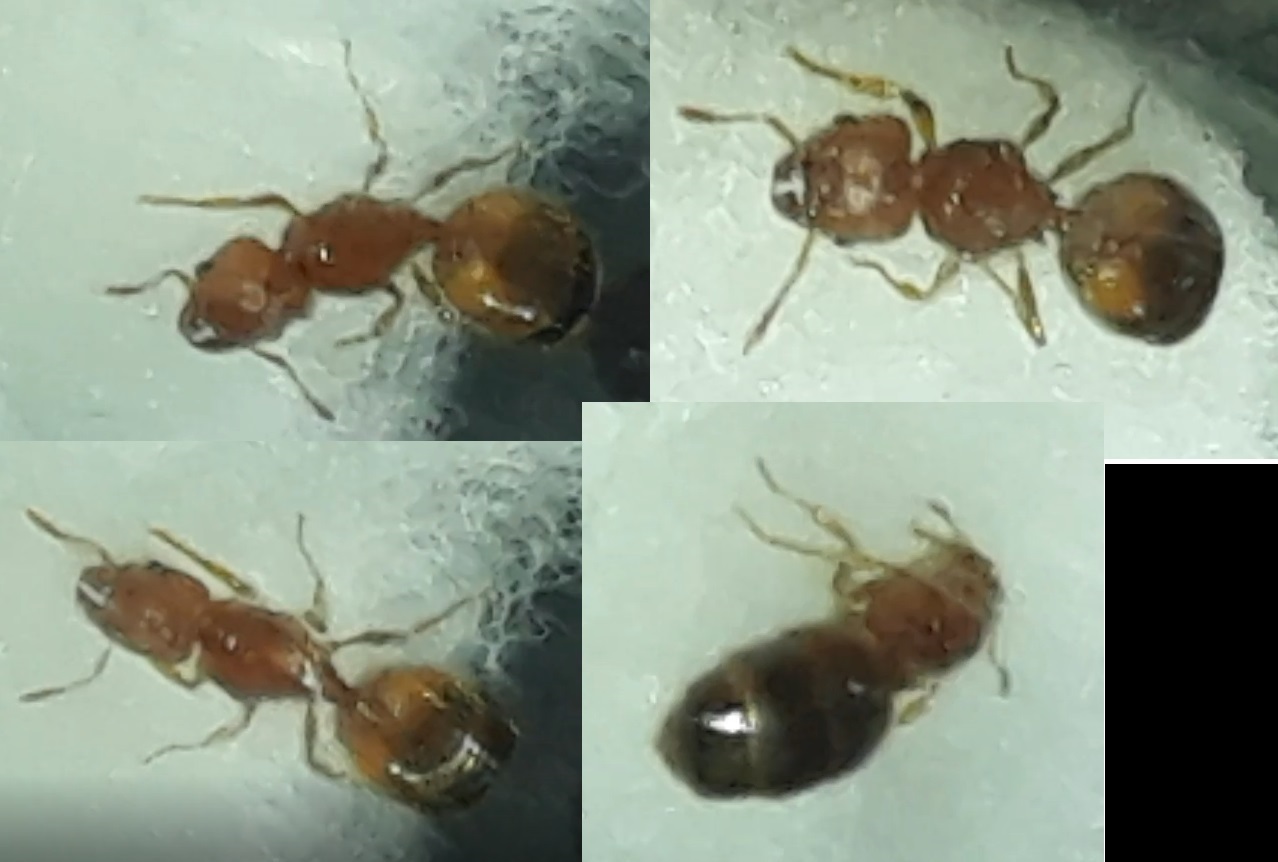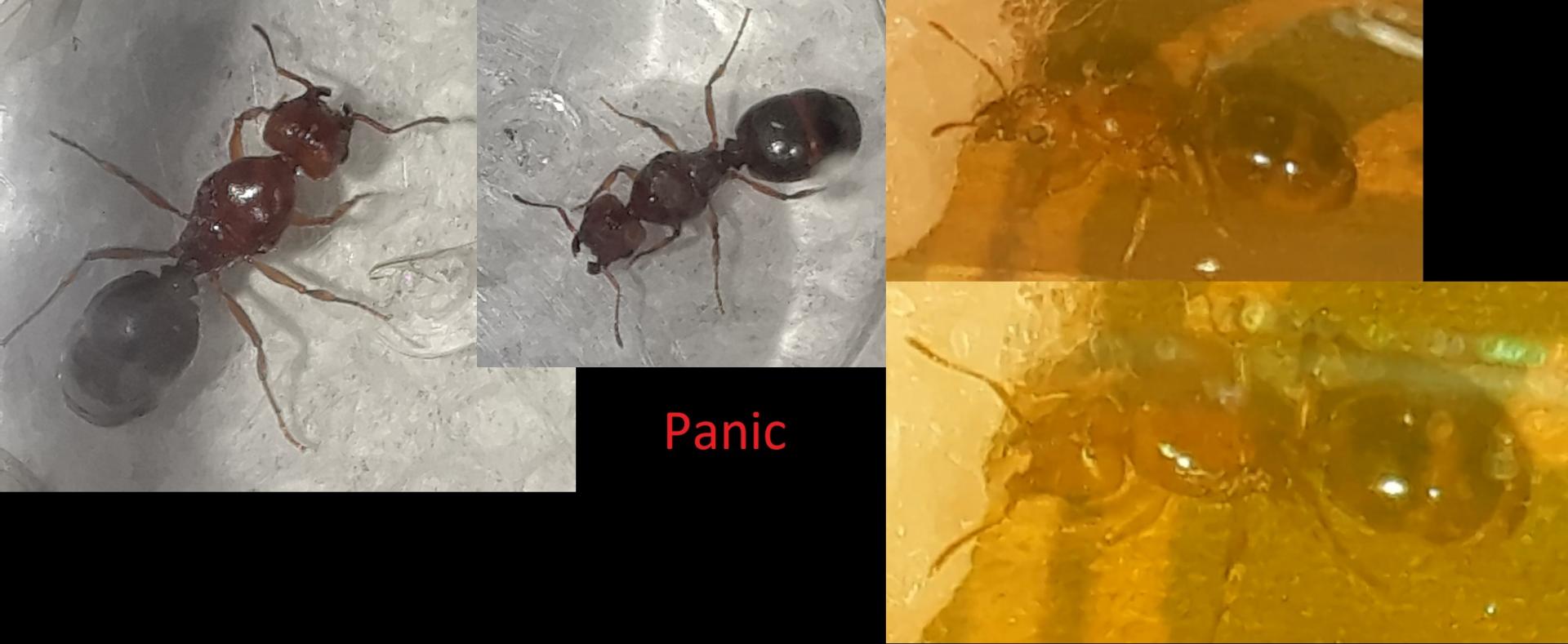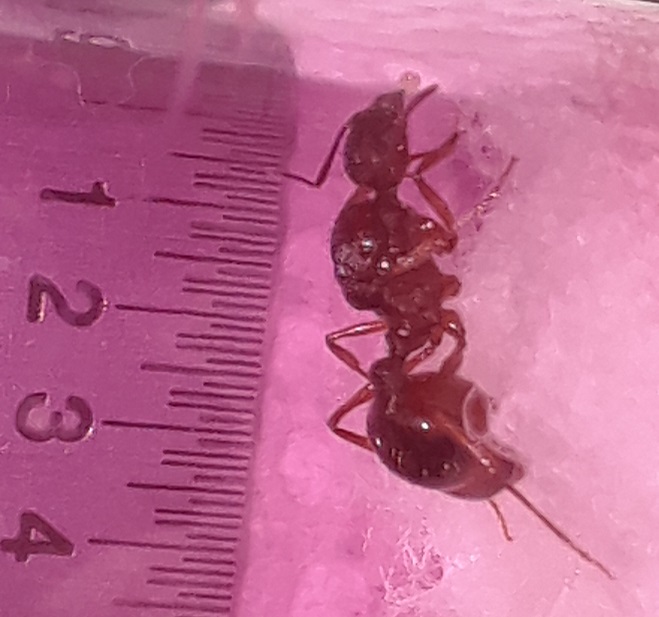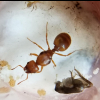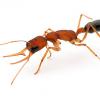My new Ant Journal Directory for those who are interested! https://www.formicul...rnal-directory/
====================
We had a pretty big storm today and during lunch at work a co-worker, who knew my new hobby, pointed out a winged ant on the outside of the lunchroom window. It was between rain spells so I slipped outside to take a look. I found not only a lot of dead males littering the ground but what looked like 4 to 5 different species of queens! Now 2 out of "5" might just be male and female (are they even ants?) but the smaller ones don't ACT like males so I am not 100% sure. I also found a queen at home yesterday that might be a 5th or 6th species. Either way I really need help identifying them all! I appreciate all the help I've gotten so far. You guys have been great!
I never thought I'd be so lucky to find so many species (and a handful in one day too!), I figured I'd only find fire ants and maybe get lucky and find a sugar ant. The excitement is real!
A
1. Location (on a map): Central Florida
2. Date of collection: Collected May 26, 2020
3. Habitat of collection: At my house, on a canal leading to a lake.
Caught two, one in driveway and another on the back porch. Plus a third I believed to be a male of the same species? They got some jaws on them!
B - 1 and B - 2
1. Location (on a map): Central Florida
2. Date of collection: Collected May 27, 2020, Noon 12PM
3. Habitat of collection: Side of work's building. Surrounded by woods and a pond very near by.
At first I thought these two were the same species as ant A that I caught at home but now I'm not so sure.Their jaws look different than A and they don't have the gold stripes on their gasters like A. They also look very slightly different from each other too. Are they even the same species? If they're not they're just very slightly different in their color and gasters shape. Or they might be the same but just variant. But do their jaws look different to you too or is that just my imagination?
C
1. Location (on a map): Central Florida
2. Date of collection: Collected May 27, 2020, Noon 12PM
3. Habitat of collection: Side of work's building. Surrounded by woods and a pond very near by.
Very dark black and so tiny! At first I barely noticed them and thought they were workers. But they look like they are built like a queen?
D - 1 and D - 2
1. Location (on a map): Central Florida
2. Date of collection: Collected May 27, 2020, Noon 12PM
3. Habitat of collection: Side of work's building. Surrounded by woods and a pond very near by.
Ok, these next two are the two I am not sure are the same species (male and female?) or if they are separate species. I'm not even 100% sure they are ants! Help me with this puzzle?
D - 1
The out of focus ones can't be helped without glare but I mainly wanted them to show how big her wing area is compared to her gaster!
D - 2
And two of them together:
E
1. Location (on a map): Central Florida
2. Date of collection: Collected May 27, 2020, Noon 12PM
3. Habitat of collection: Side of work's building. Surrounded by woods and a pond very near by.
Pretty excited about this one! Trying not to get my hopes up too much. Could it possibly be a Colobopsis impressa??? My dream ant??? I can't get a good look at her face but it looks like it might be flat. She does have a golden stripe on her gaster. Maybe a related species?
F
1. Location (on a map): Central Florida
2. Date of collection: Collected May 27, 2020, Noon 12PM
3. Habitat of collection: Side of work's building. Surrounded by woods and a pond very near by.
At first I thought this was the same as the E ants but with a closer look she may be different! Her gaster is super long compared to the others of E and she has more than one gold stripe! Her face does look very much flat! Is she a Colobopsis impressa??? Or maybe a related species? Or maybe she is the same as E but just a variant of her sisters?
=========Update=============
Yup, I found some more. >>;
G
1. Location (on a map): Central Florida
2. Date of collection: Collected May 28, 2020, 6:50AM
3. Habitat of collection: Side of work's building. Surrounded by woods and a pond very near by.
Found this one early in the morning when I was going into work! She reminds me of a Honey Pot Ant but I'm pretty sure that can't be it as I don't think we have those around here. Is she a queen or a worker? Down pointed gaster, long legs, kinda long mandibles.
H
1. Location (on a map): Central Florida
2. Date of collection: Collected May 28, 2020, Noon 12PM
3. Habitat of collection: Side of work's building. Surrounded by woods and a pond very near by.
Look at that shiny, fuzzy, gold booty! I think she's very pretty. I caught 3. Sadly one died but she was missing an antennae and then started acting like she was poisoned so I'm guessing fire ants got to her before I had, I seen them killing a Colobopsis earlier.
J
1. Location (on a map): Central Florida
2. Date of collection: Collected May 28, 2020, Noon 12PM
3. Habitat of collection: Side of work's building. Surrounded by woods and a pond very near by.
She's very slightly larger than C (Pheidole navigans?) but not by much! She's also reddish?
Panic
Yes, this she-devil has a name. She seemed so laid back, she didn't seem scared. Tried getting her into a test tube from her jar and she wanted to just stand at the edge to sip at a tiny droplet. I gently booped her with a Q-tip and she turned around and latched onto it aggressively. Ok, first time I seen any queens do that (they always ran first or just acted curious). She found the tip wet so she chilled and started drinking from it. So I had this BRIGHT idea to boop her with my finger tip and when she turned around I spooked! Then I panicked because I lost her! I had the bright idea to do this while at my computer so here I am shuffling around my computer and looking on the floor and I'm thinking "great, of all the queens to lose in the house I lose one I not only don't know the species of (and if it stings) but also the most aggressive one!" So luckily my dog is smart and doesn't just go after something he don't know what it is but is curious enough for me to notice that "what's this creature" behavior and there she is. She freaked a little until I got her into the test tube (can't really blame her, poor thing) and then she settled right at home and is happy as a clam. So she get's a name since she has personality. Though she's not the panicking one. XD
What is she? Are they normally aggressive? Are they normally this laid back when sitting in a jar/tube?
=========Update============= 05-31
G Size: By 100th ruler of an Inch.
For those that don't know 1 would be 10/100 of an inch. So it looks like she might be 40/100 of an inch? If she was moved down a bit to her mandibles and stretched out?
Edited by BitT, May 31 2020 - 6:50 AM.


